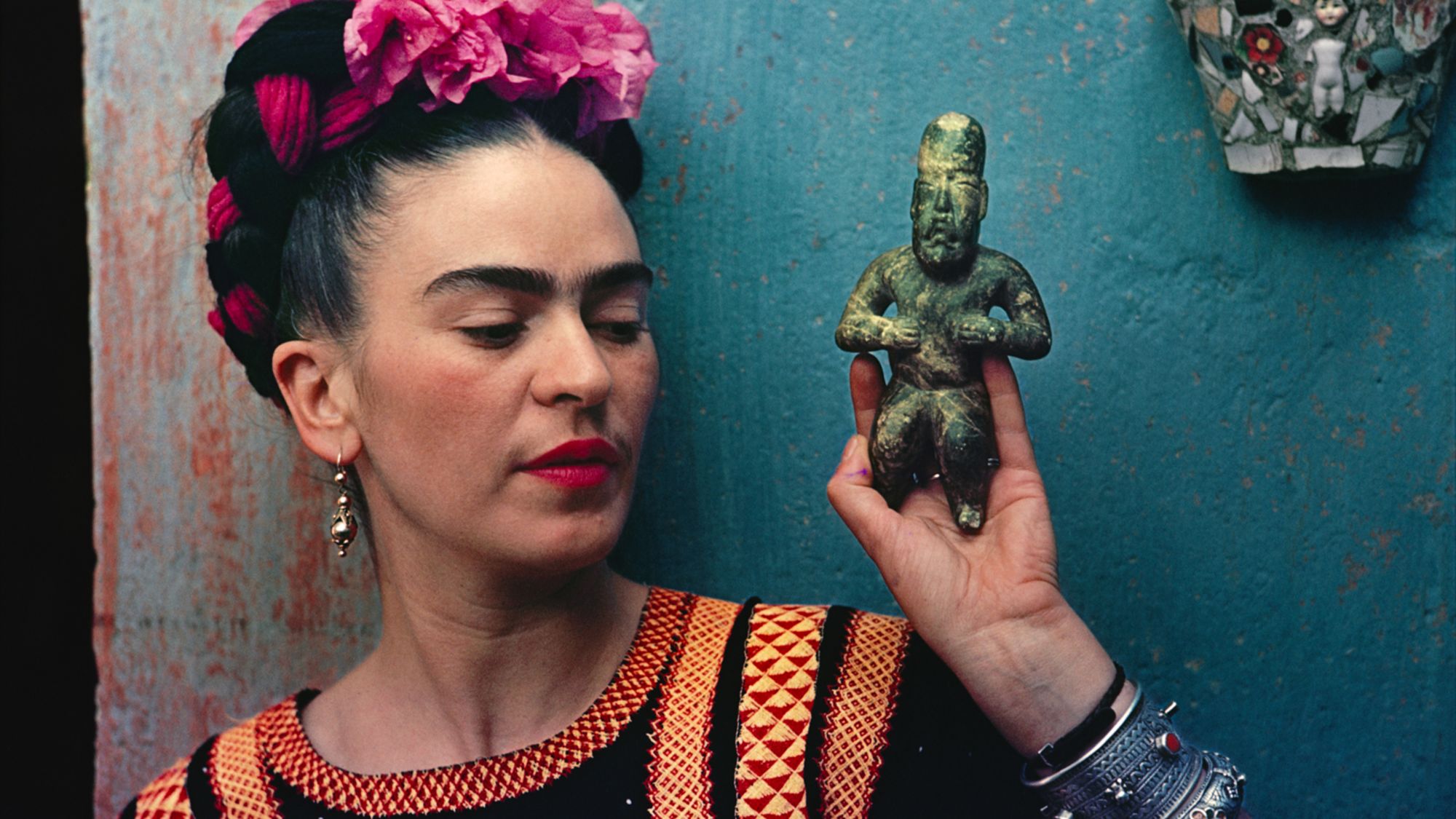Frida Kahlo’s heavy unibrow and technicolor clothes are as recognizable as her art: her image has been replicated on postcards and museum magnets, Barbie dolls and Snapchat filters, jewelry and runway collections. But, like her surreal portraits, Kahlo’s appearance was layered, heavy with meaning and intention.
A proud “mestiza” – a mixed-race woman, born to a German-Hungarian father and a half Spanish, half indigenous Tehuana mother – Kahlo purposely mixed Western fashions with traditional garb, using her clothes to craft another kind of self-portrait. Through her dress, she constructed an ethnic and political identity that spoke of the same duality found in her paintings, and sent a highly political statement of cultural identity, nationalism, and feminism.
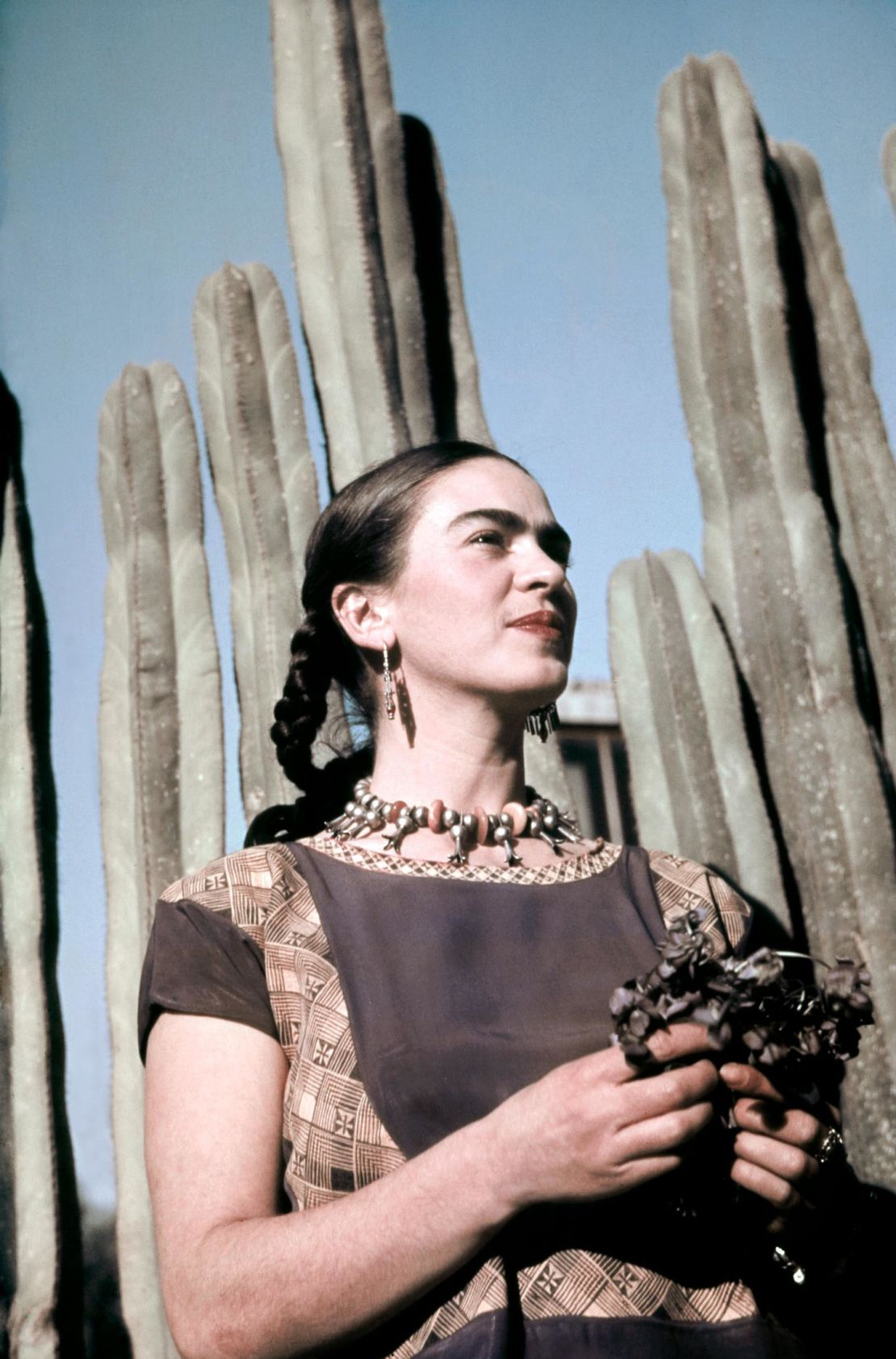
“(Frida Kahlo) created her distinctive style as a blend of traditional Mexican and European fashion, combined with the fundamental effects of her disabilities and her political beliefs: Kahlo as a bohemian artist, a Tehuana, a hybrid persona,” said Circe Henestrosa, co-curator of “Frida: Making Her Self Up,” a new exhibition at London’s Victoria and Albert Museum.
And yet since Kahlo’s death in 1954, this element of her dress has been lost, whitewashed by corporate and creativity entities looking to make her more accessible. It’s this sanitization that Henestrosa and Claire Wilcox, her co-curator, are aiming to fight back against. With a display of 200 personal artifacts and items of clothing belonging to Kahlo – silk skirts with floral embroidery, Revlon eyebrow pencils, Guatemalan coats, cotton huipils (loose tunics) – they explore how Kahlo used her dress as both adornment and metaphor and brought Mexican identity politics to the world stage.
”(‘Frida: Making Her Self Up’) is recapturing this lost message, a person and her beliefs, visually expressed through dress, which was the starting point of my research,” Henestrosa explained. “We aim to provide a personal, political and cultural context for Kahlo’s story.”
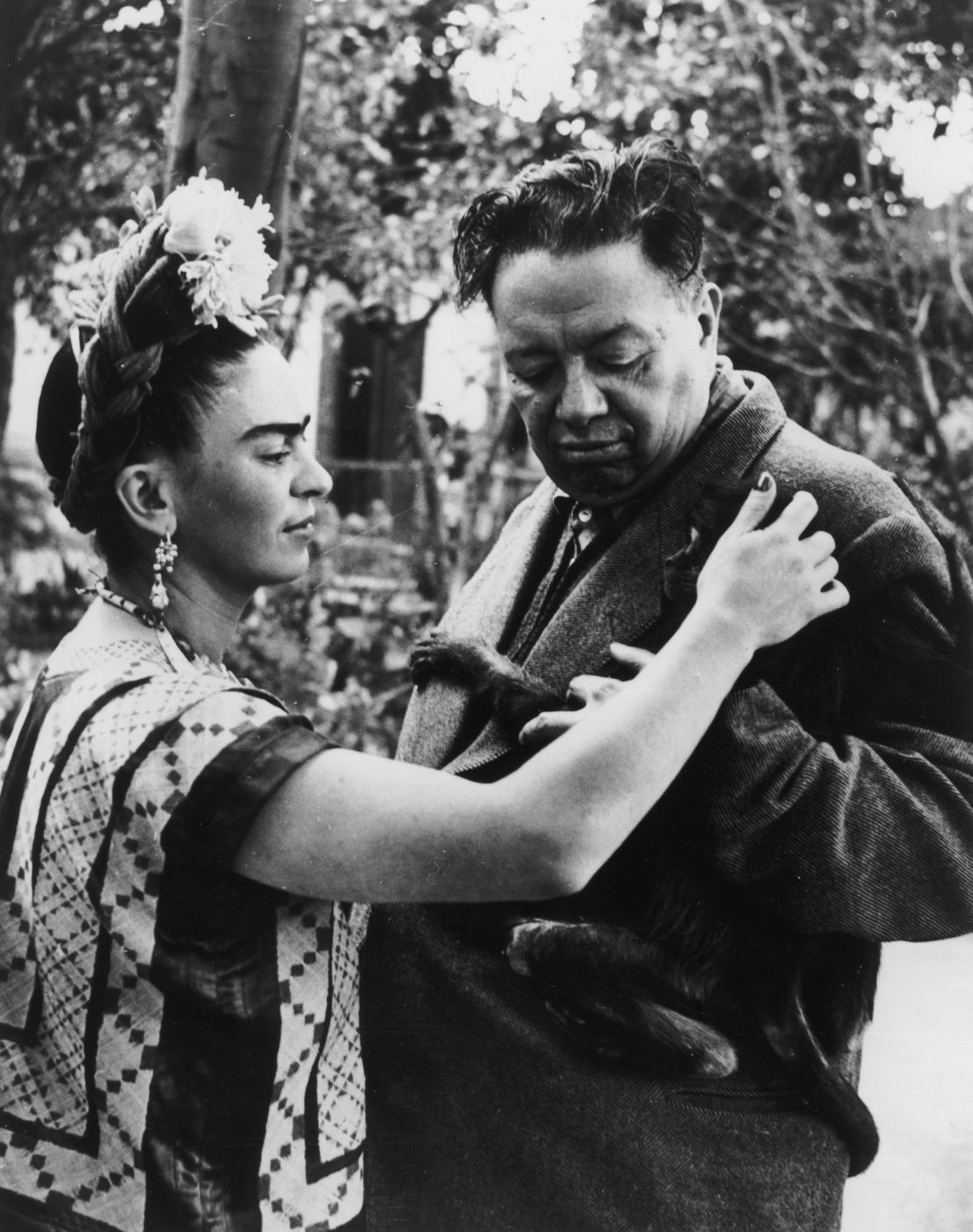
Growing up in a Westernized, upper-middle-class family, Kahlo had few traditional garments in her closet. However, despite her privileged upbringing, Kahlo was a vocal leftist, joining the socialist party when she was 16, and the Mexican Communist Party in her early twenties. For years she even claimed she born in 1910, the year the Mexican Revolution started, and was, as such a “daughter of the Revolution.”
As a young adult, Kahlo surrounding herself with the freethinkers, socialists and intellectuals of Mexico City, with whom a growing appreciation precolonial Mexican heritage was on the rise. Among them was the famed Mexican muralist Diego Rivera, who would become her husband in 1929.
A fellow communist and supporter of the revolution, Rivera often created political murals that attacked the ruling class and capitalism, elevating Mexico’s native heritage and anti-colonial efforts instead. So when he suggested Kahlo begin wearing traditional clothing as a show of Mexican pride, she embraced the idea wholeheartedly.
“Kahlo and Rivera shared a romanticized attachment to indigenous people, as did so many of the radical left at this time. The matriarchal society of the Tehuanas held a particular appeal for Kahlo, who was building her own image as an outsider: independent, but faithful to tradition, while at the same time embracing a modern, liberated lifestyle,” Henestrosa said.
“Themes of female empowerment would be directly incorporated into her artwork through her self-portrayal in the style of the Isthmus (of Tehuantepec) women.”
To Kahlo, her dress was just another way to perform the beliefs she espoused through her political affiliations. She would mix her contemporary dresses with Huipil blouses with Mayan roots, where each pattern told the story of the wearer, for example, and showcase her mixed heritage by combining colonial silver earrings with indigenous necklaces of jadeite and onyx.
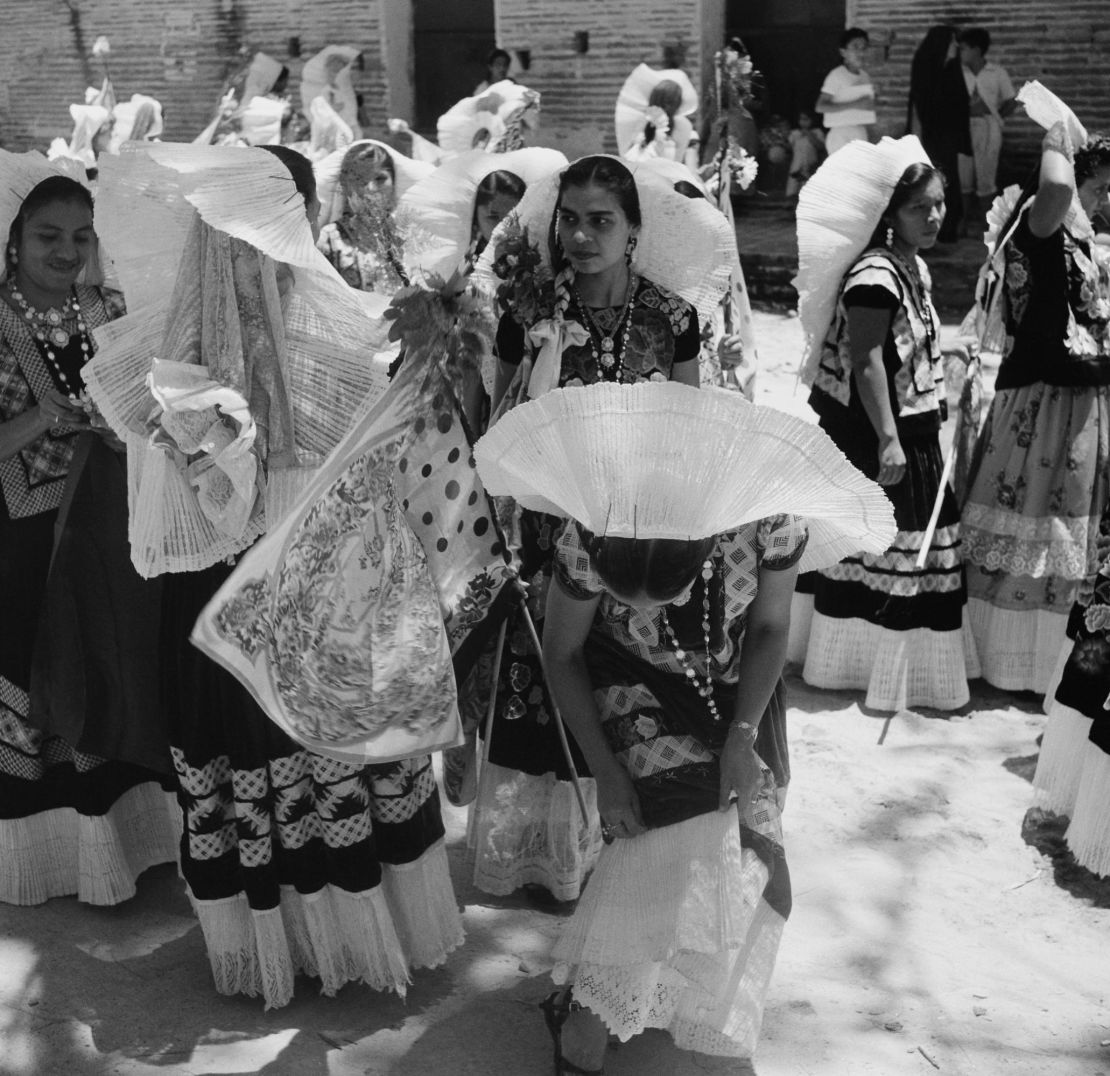
She also regularly wore rebozo scarves, either wrapping them around her shoulders or threading them through her braids. First introduced by the Spanish colonizers during Christopher Columbus’ time – only to be reworked by the Aztec villages with their traditional embroidery and eye-popping dyes, the rebozo was also worn by the women of the Mexican Revolution during the 1910s, when they were popular among the “adelitas,” female revolutionaries, who used the scarves to smuggle guns past government checkpoints, helping to oust a 35-year dictatorship. The accessory soon became a symbol of Mexico’s fight for freedom, and by wearing the scarf, Kahlo was honoring both pre-colonial and post-revolution women alike.
“The rebozo is a piece that evolved during the colonial period to become a symbol of femininity and, after independence, nationhood,” Henestrosa said.
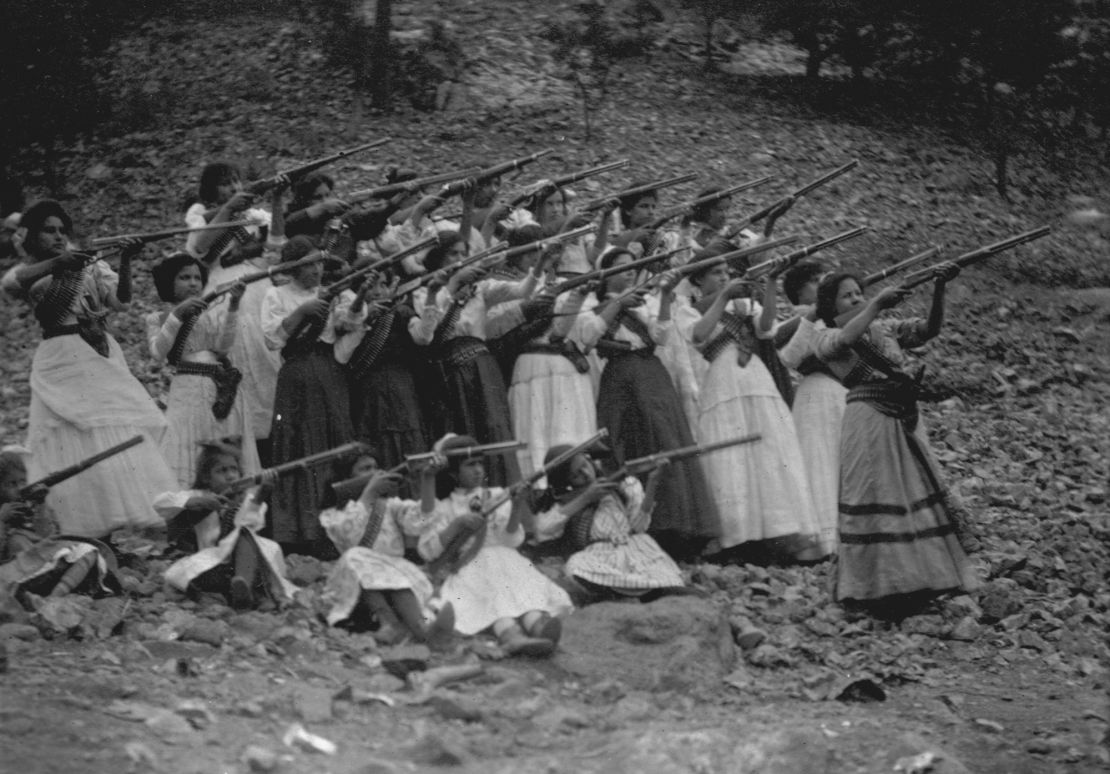
The world has no choice but to take notice: As her fame grew, her image reached all corners of the world, from society dinners with the Rockefellers and gala openings in Paris to newspapers in the Midwest. And every time she was photographed or her name made the front page, she brought the rich history of Mexico with her.
The fashion community in particular was rapt. In 1937 she brought the rebozo to the American masses when she was featured in a Vogue article titled “Senoras of Mexico,” and in 1938, Italian designer Elsa Schiaparelli based “La Robe de Madame Rivera” (“Mrs. Rivera’s Dress”) on the painter’s iconic Tehuana costume featuring intricate red floral beading down the shirtfront, bringing Mexico’s traditions to fashion’s most exclusive circles.
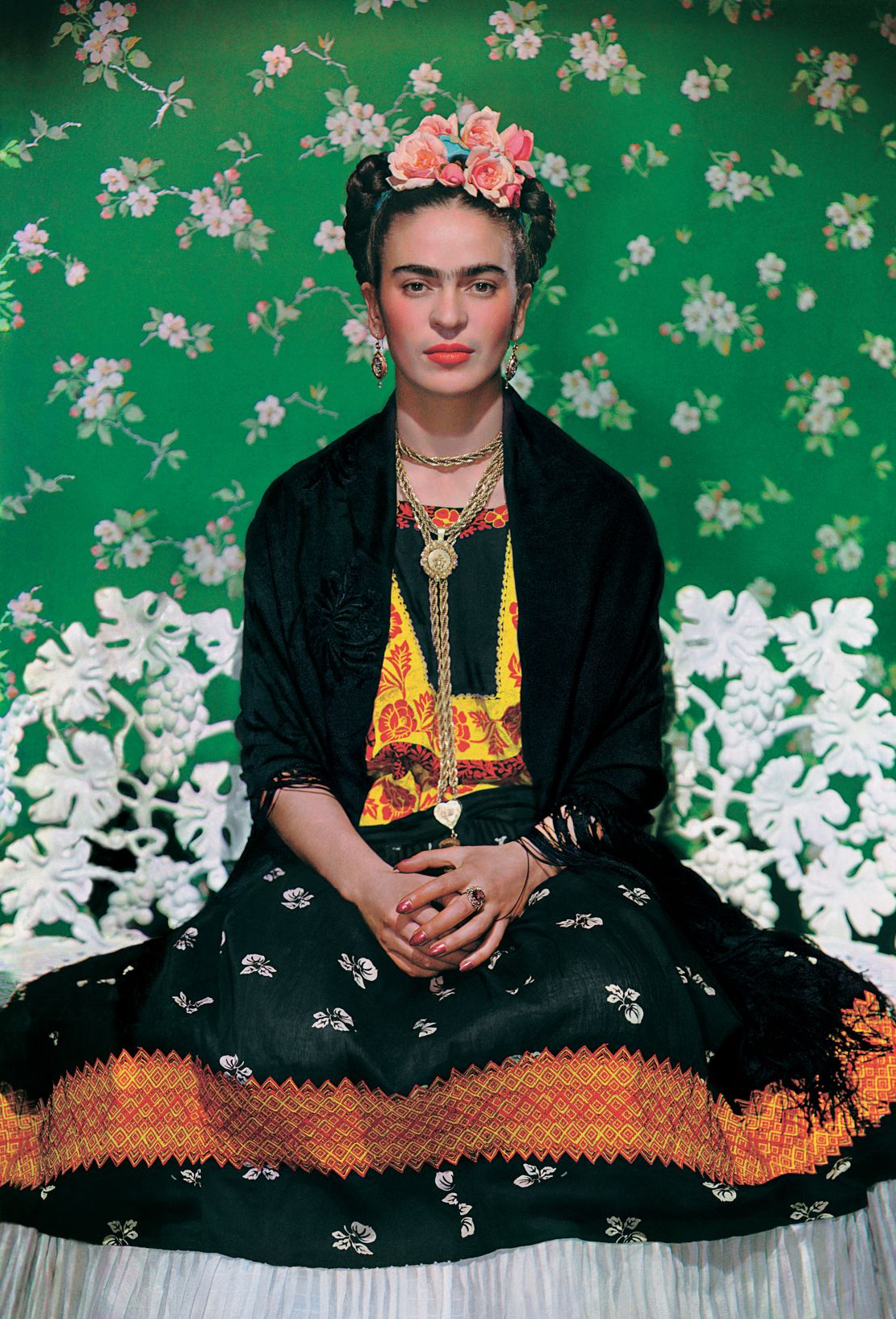
But as her iconic look became ubiquitous, it began to lose its meaning. After her death, without her present to give voice to her politics, her image has been reduced to the superficial: a dress is just a dress, a scarf, just a scarf. This isn’t only disrespectful to Kahlo’s memory, but dangerous for her legacy.
In an essay written for the “Frida Kahlo: Making Herself Up” catalog, art historian and cultural theorist Oriana Baddeley pointedly summarized the issue: “In Kahlo’s case, there is the constant danger that the woman, not the artist becomes the focus of audience attention. Halloween costumes can evoke the appearance of Frida but not the artistic language of Kahlo,” she writes.
“The cartoon characteristics of Fridamania so easily become parody obscuring the intelligence underpinning the work of one of the 20th century’s great artists. It remains important to remember that it was Kahlo who first created Frida.”
“Frida: Making Her Self Up” is on at London’s Victoria and Albert Museum from June 16 to Nov. 2, 2018.
